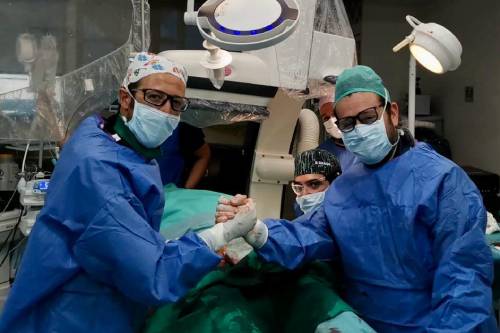
ORIF forearm operation procedure (open alignment and internal fixation)
If the bones of the forearm (ulna and/or radius) break, the bones must be fixed with plates and screws.
Type of anesthesia during forearm surgery ORIF
(Open Alignment and Internal Fixation)
You will usually be completely asleep (general anesthesia), although sometimes the anesthesia doctor may perform a regional blockage of the forearm area (when an area is numbed but the patient remains awake or sedated).
Once the operation begins, the surgeon must move the muscles, tendons, and gently move the blood vessels and nerves out of the way to reach the bone. Once there, your surgeon will place the ends as close to the normal position as possible and secure them with a plate and screws.
Special skin sutures (sutures) are used and may dissolve under the skin or on the skin after surgery. Those that remain above the skin should be removed between 10 and 14 days.
After the operation there will be a recovery period. The specialist will make some recommendations so that the recovery is good, fast and there are no problems such as inflammations.
As with all procedures, this entails some risks and complications.
Risks of ORIF Forearm Operation (Open Alignment and Internal Fixation)
Common Risks
- Pain: There may be some pain, so it is good to keep your arm raised most of the time. This will help reduce pain and swelling.
- Bleeding: There will probably be some bleeding. This is usually small and will stop.
Rare Risks
- Infection: Unfortunately, although the surgeon inserts the plaque in the operating room, where everything is sterile and your skin is cleansed, there is still a small percentage of patients who develop an infection.
- Neurovascular Damage: There are numerous blood vessels and nerves that cross and surround the wrist.
- Slipped position: Despite manipulation, plating, and plaster application, the fracture can rarely slide. An additional operation may be necessary.
- Compartment Syndrome : This is a pressure build-up in the forearm that can cause pain, nerve damage, blood vessel damage, and muscle damage. If this occurs, an emergency operation should be performed.
- Removal of metal carpentry: This is usually not necessary in adults unless there is pain, infection, or severe restriction in movement or skin irritation.
Alternative Procedure
The fracture can be left in its current position using a cast. If you are not in a good solid position, you may not recover either or your elbow or wrist function may be affected.
This will make it more likely that you will fracture again or have problems such as arthritis, pain, and disability. Of course, you can get a second opinion.
There may be other forms of fastening, such as external wiring or fasteners. These may not be appropriate for your case. You should discuss this case with your doctor.




















